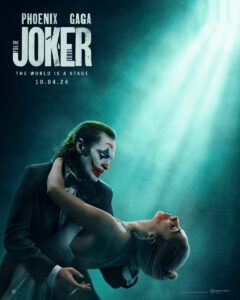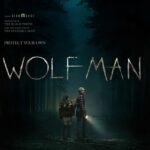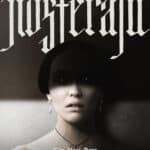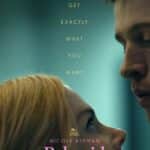
Joker – Folie À Deux
Arthur Fleck’s stuck in jail for five murders—well, actually six, one flew under the radar—and he’s waiting for his trial. His lawyer’s trying to get him an insanity plea because of his split personality thing: Arthur versus Joker. But Harvey Dent, the assistant DA, is gunning for the death penalty. Life’s rough in there; the guards like giving Arthur a hard time. One of them lets him join this choir mainly to mock him, but that’s where he meets Lee. She’s this young woman he falls head over heels for at first sight. She might just be his shot at feeling seen and understood. Only trouble is figuring out if Lee loves Arthur or she’s actually into the Joker bit.
The pressure was real to match that first Joker movie success, but Todd Phillips makes some clever choices.
He leans into using all these bits of pop culture that people eat up nowadays—even if it’s kinda cliché. It works because our society is super into performing personas and blurring reality lines. Everything can turn into an “instant TV movie” or “cult classic,” just like Joker did. And get this—Lee, also known as Harley Quinn here, gets played by Stefani Joanne Angelina Germanotta (yup, Lady Gaga), who knows a thing or two about juggling identities herself thanks to her chaotic musical persona! Phillips sure nailed it with such casting!
Alright, so check this out: Joker: Folie à Deux dives into a crazy aspect of musicals—with all that upbeat, smiley entertainment and forced happy endings. It’s kinda like the Joker’s weird laugh and that cringe nickname “Happy” his mom gave him. The whole thing feels absurdly ridiculous, kind of like life can be sometimes.
This movie dives into some heavy real-life events—like what happened during the pandemic or the Capitol Hill chaos—and even pulls from iconic stories like One Flew Over the Cuckoo’s Nest. It throws a spotlight on how we use pop culture to feel whole with catchy tunes that are broken down into little bites of common wisdom, poking fun at how confusing life is and whether true love even exists.
Joker: Folie à Deux also digs into our obsession with social media—how we’re all about crafting these perfect lives online for everyone to envy. You know, putting on these big smiles so it looks like we’ve got it all together (while we’re really wanting to be the stars of our own show). It’s a wild ride through our need to control how we’re seen by others.
The movie brings Joaquin Phoenix back as the Joker, and he’s really the core of the whole thing. Right from the start, he completely immerses himself in the role, capturing all the pain and struggle. He’s so good that he even ends up outshining Lady Gaga. She’s great too, bringing out a lot of depth and complexity in her character, but she doesn’t quite match his range.
The director throws together all sorts of genres—there’s musical bits, prison stuff, and even animation to highlight how shadows kinda take over your life when you’re in the limelight. It’s like this dark side creeping up on you or losing something important again and again.
Even his lawyer thinks Arthur should split himself into two personas to survive nowadays. But Arthur isn’t having it; he’s not hiding under an umbrella from life’s storm. He might be vulnerable and exposed, but he stays whole through all the troubles while everyone else around him wears masks to hide who they really are—even if it’s a Joker mask.
From start to finish, Phoenix is downright heartbreaking in how real he makes things feel.
Even when he’s laughing or tap-dancing (and he’s really good at it) to the tune of “It’s show time!” you can’t help but notice this twist on things.
If you loved the first Joker movie, this new perspective might throw you off a bit. But you’ll still love watching Joaquin Phoenix nail those scenes where he fully becomes the Joker, with that unique movement style that made his character so famous. Director Todd Phillips kind of breaks down all the usual expectations. Instead of Arthur’s “There is no Joker” mirroring Tony Stark’s famous line “I’m Iron Man,” it gives us a fresh take, along with a cheeky nod to the folks who made the movie with its playful closing of “That’s All Folks.”
To watch movies and TV shows online, please sign up with our partner, a legit streaming service.
Get Started ➔






